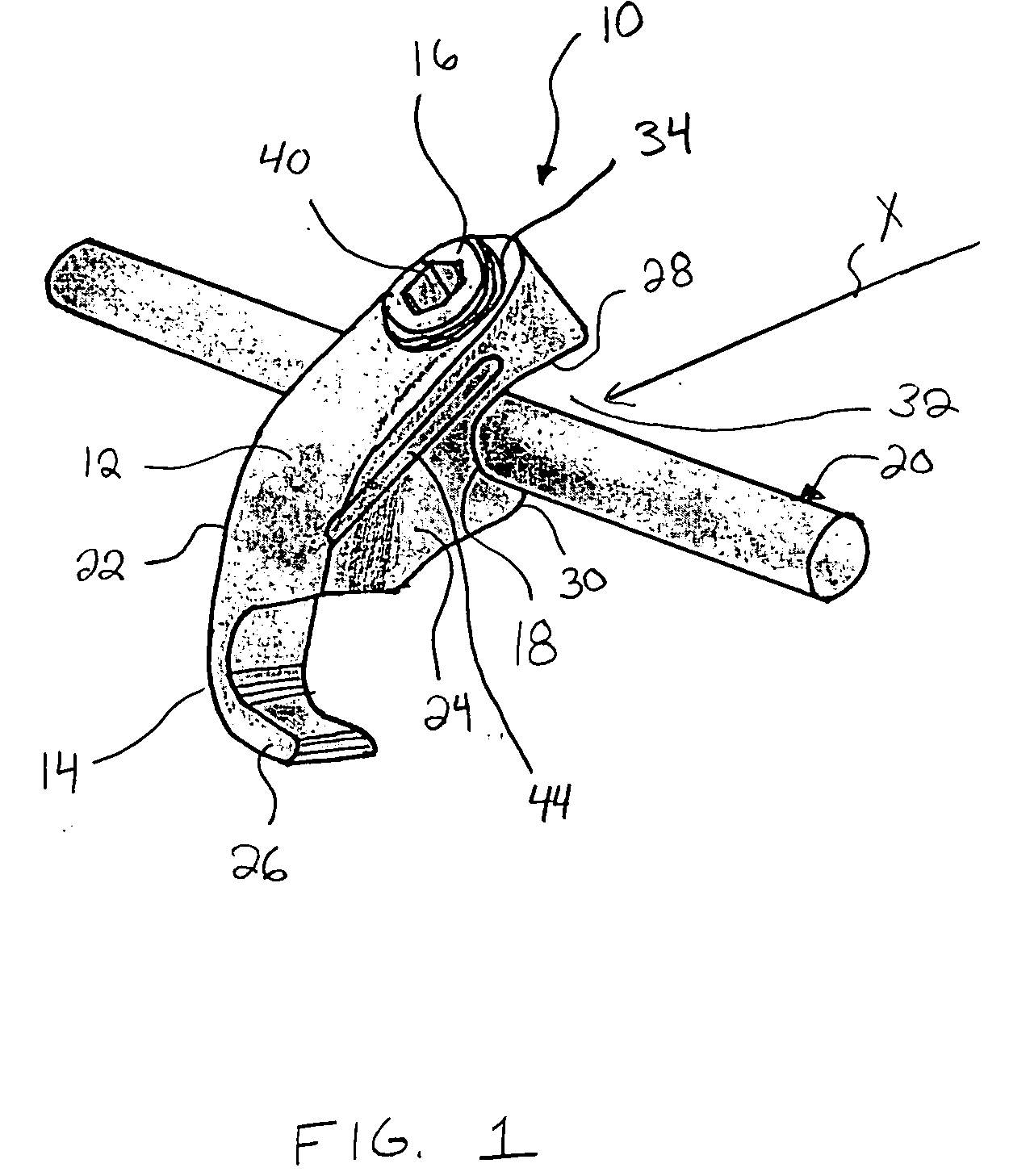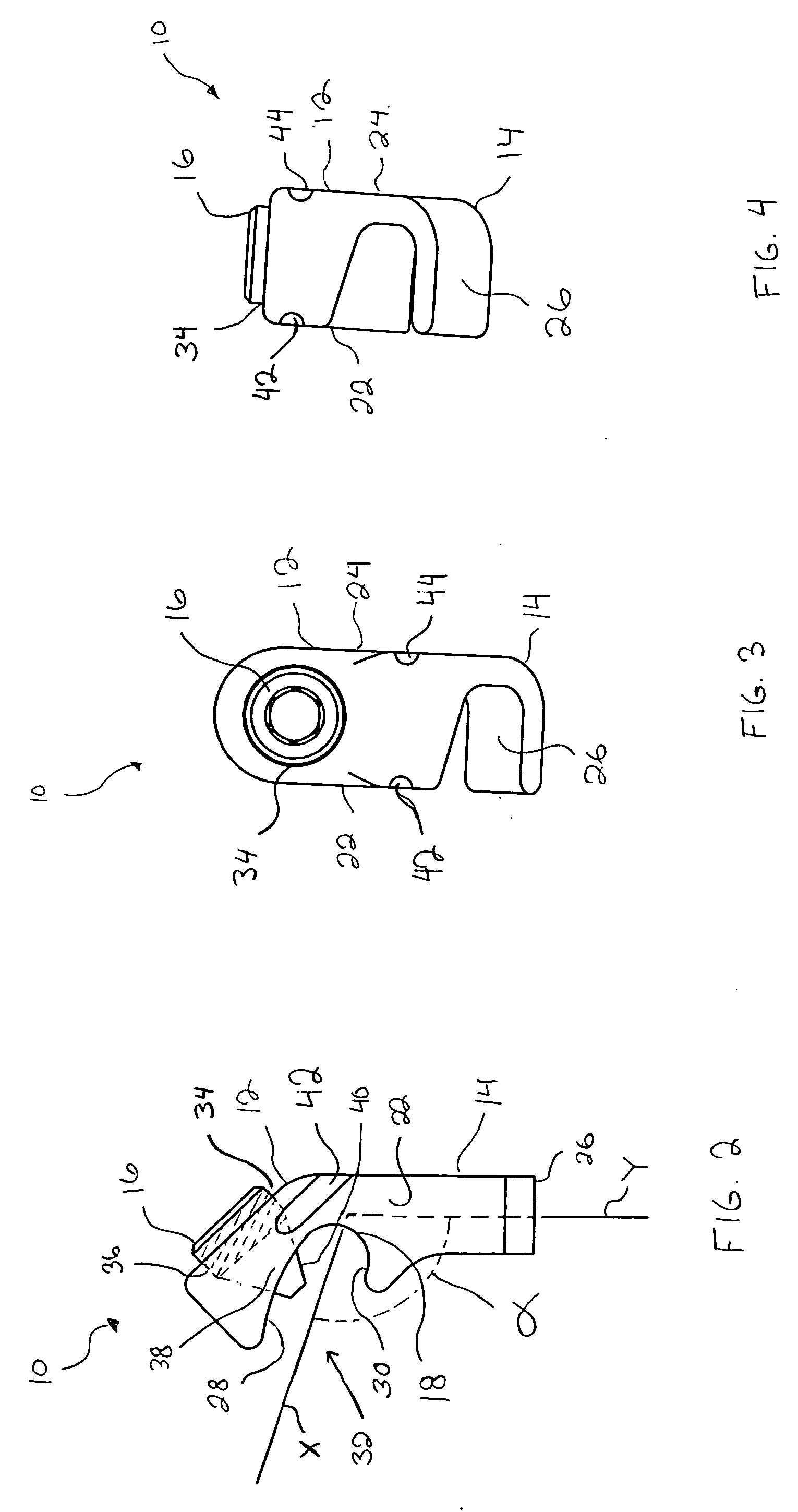Spinal fixation hooks and method of spinal fixation
- Summary
- Abstract
- Description
- Claims
- Application Information
AI Technical Summary
Problems solved by technology
Method used
Image
Examples
Embodiment Construction
[0016] Referring to FIG. 1, a first illustrative embodiment of a spinal fixation device according to the present invention is shown attached to a spinal rod. The spinal fixation device, shown as spinal hook 10, generally includes a body 12, a hook 14 extending from the body 12, and a fastener 16 engaged with the body 12. Body 12 may define a rod-receiving channel 18 for receiving the spinal rod 20. In the illustrative embodiment of FIG. 1, hook 14 is attached at the left side of body 12 and extends to the right (as viewed in FIG. 1), and thus is called a “left” embodiment. The illustrative embodiment of FIGS. 2-4 is substantially identical to the embodiment of FIG. 1 except that it is a “right” embodiment, in that the hook 14 is attached at the right side of body 12 and extends to the left (as viewed in FIGS. 3 and 4). The right and left embodiments may be provided, for example, to allow spinal hooks 10 to be attached to a portion of a vertebra, such as a lamina, from both sides of ...
PUM
 Login to View More
Login to View More Abstract
Description
Claims
Application Information
 Login to View More
Login to View More - R&D Engineer
- R&D Manager
- IP Professional
- Industry Leading Data Capabilities
- Powerful AI technology
- Patent DNA Extraction
Browse by: Latest US Patents, China's latest patents, Technical Efficacy Thesaurus, Application Domain, Technology Topic, Popular Technical Reports.
© 2024 PatSnap. All rights reserved.Legal|Privacy policy|Modern Slavery Act Transparency Statement|Sitemap|About US| Contact US: help@patsnap.com










